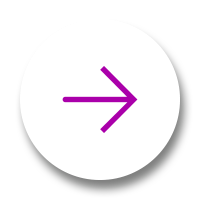DIY: Benchmarking Printer
The goal is to quantify the capabilities of the Printing device. It is important to understand the difference between Precision and Accuracy to follow the methodology.
Precision
The first thing that should be checked on a printer before any color correction work is done, is to evaluate its precision, or the amount of variation that the printer has when rendering color. When printing a color value on a sheet we expect that color is consistent across the whole page and on the first and last sheet in the print run, and on any day as long as the device has been calibrated to factory specifications. But this is not true on any printing device. The color is never the same in the previously mentioned scenarios, so the question becomes, how different is the color in the different scenarios. To determine this, a benchmark needs to be completed.
Some causes could be due to defective components of printer, old, defective consumables, or technical limitations of the printer. Knowing this is important to optimize your quality.
Determine Precision
Print the benchmark PDF for the given printing device, and first assess the within sheet uniformity. If E-Factor of within sheet variation is 30% of your Production Standard, don't proceed until the printer is fixed, replaced, or you change the desired Production Standard for this printer. Then print 1000 page PDF file (ideally uninterupted), measure every 50 or 100 and assess variation through the print run.
Never accept unstable and unpredictable printers (big variations).
It often happens that variation analysis doesn't result in acceptable E-Factor values and a lot of maintenance procedures have to be performed (mechanical adjustments, used parts replacement, consumables changes...). In some cases, it takes time and effort but the final result helps avoid waists and claims
Accuracy
In this step, analysis is focused on matching relevant Industry references (GRACoL2013_Coated). If your device is not matching desired reference and the device is properly maintained it may require some additional attention. Depending on printing technology, potentially new G7 curves, TVI cures, or new ICC that better describes the Printer might be required. The Gamut of the device is to be compared to Reference Color Space. In addition, in-depth reporting helps to understand the Printer's dot gain TVI, G7 parameters Tonality, and Grey Balance. Some device-specific checking might be performed. For some printing devices an Resolution Test, Slurring-Doubling Test, or other technology-specific can create detailed analysis of the Printer condition.
When analyzing accuracy, three types of problems should always be distinguished:
1. Objective reasons why something is not reproducible.
Objective gamut limitations arise when a specific print substrate is used in conjunction with certain inks. But even these can sometimes be changed to a certain extent. For example, increasing the amount of ink for 100% primaries (e.g. higher Ink Restriction value).
Another example of objective limitations is addressability limitation - e.g. number of steps in the ramp. If screening technology doesn't allow to produce of smoother gradient without hardware/software upgrade such parameter might be a limit.
2. Calibration/Profiling/Setup errors allowing for correction.
This type of inaccuracy can most often be corrected. Creating G7, TVI calibrations, generating new ICC profiles, or adjusting calibration settings open the procedures for radical error correction
3. Errors whose nature is related to the methodology.
Examples of such errors are:
- M-condition mixing - (profile / measurement)
- Mixing two different measuring Instruments
- Color Specification mismatch
- Wet / Dry mismatch
- White/black backing data mismatch
A knowledgeable user has to understand how potential errors can impact on the final result and reduce them to minimum
Summary of Accuracy
- Learn more about substrates, inks, and all-important consumables - that is what creates the gamut of your device. Experiment with some changes - sometimes one component may change a lot.
- Understand your printing system settings, potential calibration, and profiling procedures. Most of the vendors developed their own technology that can help reduce potential errors
This knowledge will help you to know what you can fix and what to accept as an objective limitation
Depending on Printing Process select the best way to Benchmark Printer.
 |
 |
 |
 |
| OffsetPress | Digital Press |
Large Format Printer |
Proofer |
Related Topics
Contact ChromaChecker Support
Additional information and Support Form is available for logged users.